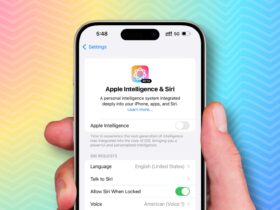Daftar Isi
In the vast digital landscape, where information flows seamlessly across networks, security is paramount. Whether you’re researching, shopping, or simply catching up on news, your internet activities leave a trail of data. Incognito mode (also known as private browsing or privacy mode) emerges as a powerful tool to protect your online privacy. Let’s delve into what incognito mode is, how it works, and why it’s essential for securing your internet access.
Demystifying Incognito Mode
What is Incognito Mode?
Have you ever wanted to surf the web without leaving a digital footprint? That’s where this mode comes in—a virtual cloak of invisibility for your online adventures. But what exactly is incognito mode, and how does it keep your browsing activities private?
When you open a new incognito window in your browser, you’re entering a realm of secrecy. Here’s a breakdown of how it works:
- No History: One of the hallmarks of this mode is its ability to leave no trace. Your browser won’t save your browsing history, ensuring that once you close the this window, your online journey vanishes into thin air. Say goodbye to cookies, cached files, and search history—this mode keeps your browsing discreet and confidential.
- No Autofill: Worried about your sensitive information falling into the wrong hands? Fear not—this mode doesn’t remember your form data or passwords. So, whether you’re filling out personal details or logging into accounts, rest assured that your data won’t be stored locally, safeguarding your privacy.
- No Extensions: In this mode, browser extensions and add-ons take a backseat. By disabling third-party tools, this mode ensures that no external entities can track your online behavior, giving you peace of mind as you navigate the web.
In essence, this mode provides a sanctuary for private browsing, shielding your online activities from prying eyes. So, the next time you want to explore the web in private, simply open a new incognito window and enjoy the freedom to browse without leaving a digital footprint.
Read More: Brave Browser’s AI Assistant Leo: A review of its integration on Android Devices
How to Use Incognito Mode
In today’s digital age, privacy concerns are at the forefront of online activities. Fortunately, web browsers offer a solution—incognito mode. But how exactly do you use this feature to safeguard your browsing habits? Let’s break it down:
- Google Chrome: To access this mode in Chrome, simply click on the three dots located in the top-right corner of the browser window. From there, select “New Incognito Window” to launch a private browsing session.
- Mozilla Firefox: Firefox users can activate this mode by clicking on the three horizontal lines, often referred to as the “hamburger menu,” located in the top-right corner. Then, choose “New Private Window” to begin browsing privately.
- Microsoft Edge: In Microsoft Edge, accessing this mode is a breeze. Click on the three dots in the top-right corner of the browser window, then select “New InPrivate Window” to open a private browsing session.
- Safari: For Safari users on Mac, opening an this window is a straightforward process. Simply click on “File” in the top menu bar and choose “New Private Window” to initiate private browsing.
By utilizing this mode in your preferred web browser, you can enjoy enhanced privacy and security while browsing the internet. Whether you’re conducting sensitive research or simply exploring the web without leaving a trace, this mode offers peace of mind and protection for your online activities.
Why Incognito Mode Matters
Privacy Protection
Incognito mode is your shield against prying eyes. It’s perfect for:
- Shared Devices: If you’re using a public computer or someone else’s device, this mode ensures that your browsing history and login credentials remain private.
- Gift Shopping: Surprise your loved ones without leaving a digital trail. This mode prevents targeted ads based on your gift searches.
Avoiding Personalization
Incognito mode bypasses personalized recommendations. Without cookies and browsing history, websites can’t tailor content to your preferences. This is useful when researching unbiased information or avoiding filter bubbles.
Conclusion: Surfing Anonymously
Incognito mode isn’t foolproof—it won’t hide your online activities from your internet service provider or employer. However, it’s a powerful tool for safeguarding your privacy. So, the next time you need to browse discreetly, activate incognito mode and explore the web without leaving a trace.


































